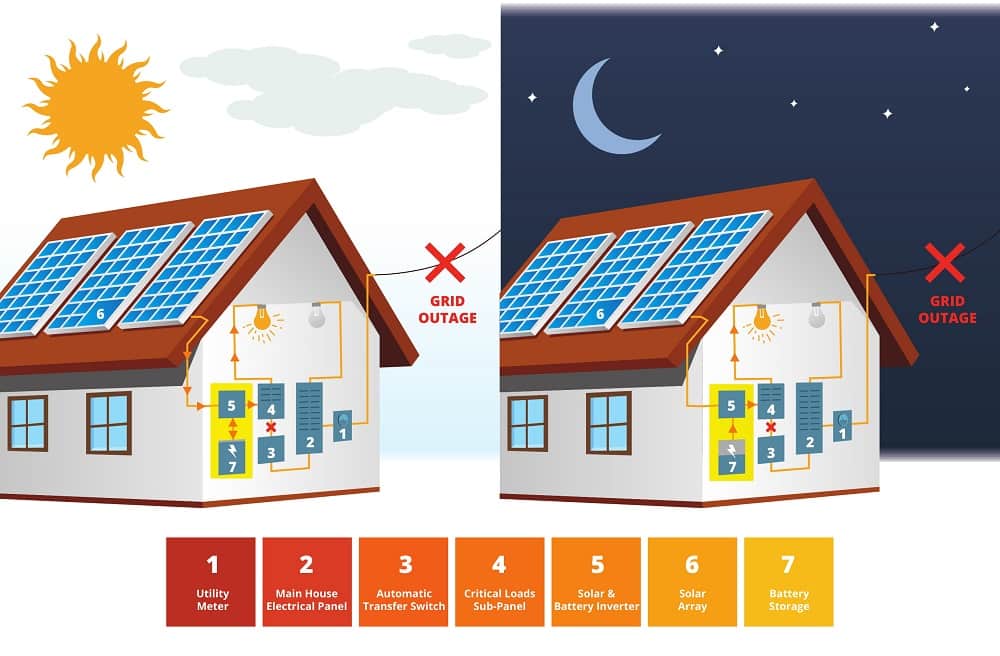How do batteries work with solar?
How do batteries work with solar?
Most solar arrays don’t have batteries- yet. Most residential solar arrays in the United States remain grid-tied, meaning they’re connected to the utility electric grid. Grid-tied solar arrays are significantly less expensive than arrays with batteries. Standalone solar arrays are also more efficient than solar paired with storage. Batteries lose a small amount of their electrical charge as the current moves through them, making battery-paired solar arrays slightly less efficient that standalone solar.

The primary value of batteries today is for backup power. Pairing your solar array with batteries allows you to power your electrical needs even when the utility grid is down. Luckily, power reliability in the United States is high and grid outages happen relatively infrequently. Regardless, the opportunity to power necessary or desirable electrical loads during grid outages makes battery storage an attractive investment for many Americans. At present, batteries still come with a premium price tag (see our Battery Storage Guide for Homeowners for pricing information), however many home and business owners are taking the storage leap in order to access the backup power value batteries can provide them. As new rate designs and economic opportunities arise that increase the value proposition of battery storage (ex: time of use rates that incentivize customers to store electricity when it’s cheap and use it when utility prices are high), battery economics will change. Solar United Neighbors is tracking these developments and will share them with our network once they become available.
Beyond the economics of battery storage, there are other technical considerations worth keeping in mind. Batteries take up room in your home, can require maintenance, and will likely need to be replaced at least once during the lifetime of your solar array. Additionally, and most importantly, there are different types of battery chemistries that affect how much energy you can store and draw upon during a grid outage. For more information on how batteries work, download our free Battery Storage for Homeowners guide.
